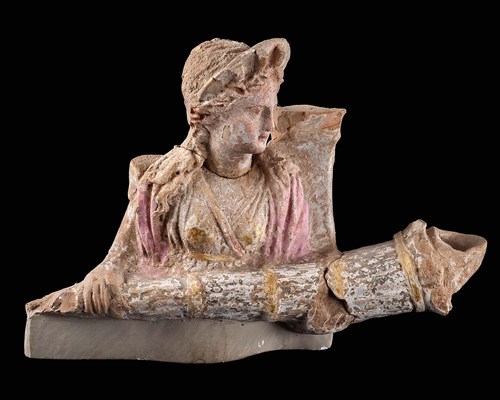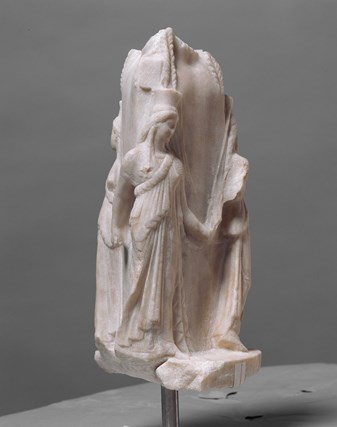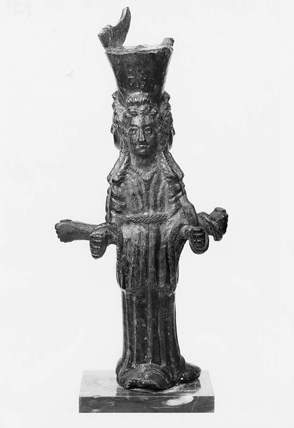According to the most common version of the myth, Hekate was the daughter of Perses and Asteria. Others describe her as the daughter of Zeus and Demeter. She was an ancient Thracian divinity and a Titan who received a share of the earth, sea, and heaven from Zeus. She favoured, in particular, kings, warriors, athletes, fishermen, and cavalrymen, but she also served as nursemaid to all living creatures. Her gifts to mortal men and women included wealth, wisdom, and victory, while flocks of cattle received prosperity from her. Sailors and hunters could depend on her for good luck in their travails. During the Titanomachy, she stood by the gods of Mount Olympus and slew Clytius. Her extensive powers and dominion over portions of earth and sky resulted in her identification with various divinities. She was confounded with Demeter, Rhea, Artemis or even Persephone as a goddess of the moon. Her mysteries were celebrated in Samothrace, and she was connected with the Cabeiri and the Curetes. In the Homeric Hymn to Demeter, tender-hearted and bright-coiffed Hekate heard the cry of Kore from her cave but failed to see who was responsible for her rape. Ten days later, she met Demeter with a torch in her hand and accompanied her searching for Persephone. When Kore eventually returned from the Underworld, Hekate became her loving companion and attendant. As a deity of the Netherworld, she rules over the departed souls and is accompanied by Stygian dogs. In later periods, Hekate acquired a fearsome reputation as a deity who sent demons and phantoms to teach her disciples all kinds of sorcery. People believed that Hekate dwelt at crossroads, on tombs, and near sites where the blood of murdered people had been spilt. The whining and howling of dogs in the middle of the night announced her approach.

Lamp in the form of a bust of Hekate, 2nd–1st century BCE, Boston Museum of Fine Arts © Boston Museum of Fine Arts
There is very little information about Hekate’s role in the cult at Eleusis, but she often appears in Eleusinian iconography, usually with three bodies or a torch in her hands.

Hekataion: Hecate in three forms with Charites, 2nd/1st century BCE, sculpture, Kunsthistorisches Museum ©KHM-Museumsverband

Triple-bodied Hekate, 50-200 CE, sculpture, Boston Museum of Fine Arts © Boston Museum of Fine Arts







